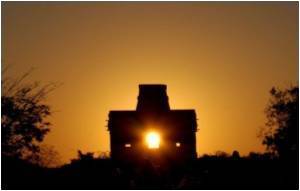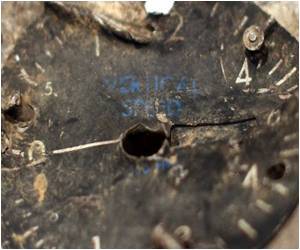The Maya civilization had one of the richest cultures in the Americas at its peak. The ethnic Mayas in central America and Mexico of today suffer from discrimination, exploitation and poverty.

The rich Mayan culture will be in the global spotlight Friday when revelers -- and doomsday watchers -- will mark the end of a 5,200-year era as sketched out in the elaborate Mayan calendar.
But the plight of indigenous Mayas in the region will likely go undiscussed.
"The indigenous population was always seen as cheap labor and this persists to this day," said Guatemalan anthropologist Alvaro Pop, a member of the United Nations Permanent Forum on Indigenous Issues.
"They are seen as a tool and are not the focus of public policies."
The Maya civilization reached its peak between the years 250 and 900, but then slipped into decline around 1200.
Advertisement
Today, there are currently an estimated 20 to 30 million direct descendants of the ancient civilization living in southern Mexico, Belize, Honduras, El Salvador and Guatemala, where the indigenous group is most prevalent.
Advertisement
Within the indigenous community, which accounts for 42 percent of Guatemala's 14.3-million-strong population, the poverty rate is 80 percent.
Nearly six in 10 indigenous children suffer from chronic malnutrition, and the infant mortality rate has hit an alarming rate of 40 per 1,000 live births, according to the United Nations Development Program (UNDP).
In Mexico, social misery and exploitation led to the creation in 1994 in Chiapas state of the media-savvy but later weakened Zapatista National Liberation Army, which drew attention to the community's plight.
But ethnic Mayas paid perhaps the heaviest price during Guatemala's civil war that pitted the army against leftist guerrillas from 1960 to 1996.
"There were external reasons which exacerbated the population's poverty and led to a stigmatization of indigenous people," according to Pop.
More than 600 massacres of indigenous communities were recorded during that period and tens of thousands of Indians sought refuge in southern Mexico from the brutal counter-insurgency by the military, according to a 1999 UN report.
Under the "scorched earth" policy conducted by the regime of ex-dictator Efrain Rios Montt (1982-83), entire villages were wiped out.
In the midst of this systematic repression, indigenous activist Rigoberta Menchu rose to prominence. Her strong condemnation of the massacres earned her the Nobel Peace Prize in 1992.
"The armed conflict was used as a pretext to exterminate the indigenous population, physically and spiritually," Menchu told AFP.
As part of an apparent bid to root out Mayan spirituality, security forces targeted indigenous priests.
Menchu said the "scorched earth" policy also aimed to "push the indigenous population deeper into poverty."
Today, areas that are home to indigenous peoples have seen an influx of troops as part of the government's war on drugs.
And once again, Mayan descendants are being expelled from their lands -- this time, to make way for hydro-electric, mining or farming projects.
In Honduras, the growing demand for African palm oil, a key ingredient in cosmetics and processed foods, is fueling deadly land disputes, pitting large landowners against landless peasants.
Source-AFP










